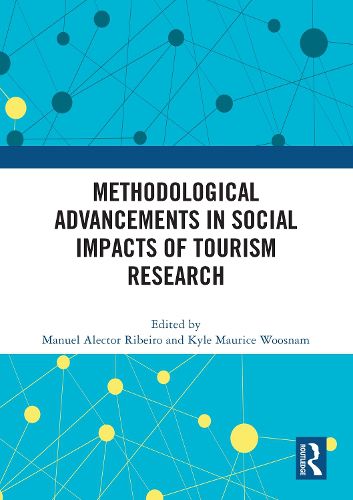Readings Newsletter
Become a Readings Member to make your shopping experience even easier.
Sign in or sign up for free!
You’re not far away from qualifying for FREE standard shipping within Australia
You’ve qualified for FREE standard shipping within Australia
The cart is loading…






This book offers a fresh perspective of on some of the cutting-edge methodological approaches being used among scholars conducting work on social impacts of tourism. These works are international in focus, spanning across Europe (e.g., Austria, Croatia, Portugal, Serbia, Slovenia, Spain, and Turkey) and Asia (e.g., Hong Kong, Iran, Japan, Malaysia, Singapore, Thailand, and Turkey). The authors employ qualitative, quantitative, and mixed methods designs and some of the notable focus areas include comparative studies of residents' perspectives of tourism (i.e., involving impacts of various forms of tourism and community children's perceptions of tourism); statistical techniques such as multigroup invariance analysis and fuzzy set qualitative comparative analysis; and the employment of novel measurement tools such as the implicit association test involving residents' implicit stereotypes of visitors from multiple countries and the utilization of the human-scale development to identify residents' needs and satisfiers. This edited volume will most assuredly advance the methodological focus of research on social impacts of tourism moving forward.
This book will be of great interest to all upper-level students and researchers in tourism, planning and related fields. The chapters in this volume were originally published as a special issue of Journal of Sustainable Tourism.
$9.00 standard shipping within Australia
FREE standard shipping within Australia for orders over $100.00
Express & International shipping calculated at checkout
This book offers a fresh perspective of on some of the cutting-edge methodological approaches being used among scholars conducting work on social impacts of tourism. These works are international in focus, spanning across Europe (e.g., Austria, Croatia, Portugal, Serbia, Slovenia, Spain, and Turkey) and Asia (e.g., Hong Kong, Iran, Japan, Malaysia, Singapore, Thailand, and Turkey). The authors employ qualitative, quantitative, and mixed methods designs and some of the notable focus areas include comparative studies of residents' perspectives of tourism (i.e., involving impacts of various forms of tourism and community children's perceptions of tourism); statistical techniques such as multigroup invariance analysis and fuzzy set qualitative comparative analysis; and the employment of novel measurement tools such as the implicit association test involving residents' implicit stereotypes of visitors from multiple countries and the utilization of the human-scale development to identify residents' needs and satisfiers. This edited volume will most assuredly advance the methodological focus of research on social impacts of tourism moving forward.
This book will be of great interest to all upper-level students and researchers in tourism, planning and related fields. The chapters in this volume were originally published as a special issue of Journal of Sustainable Tourism.